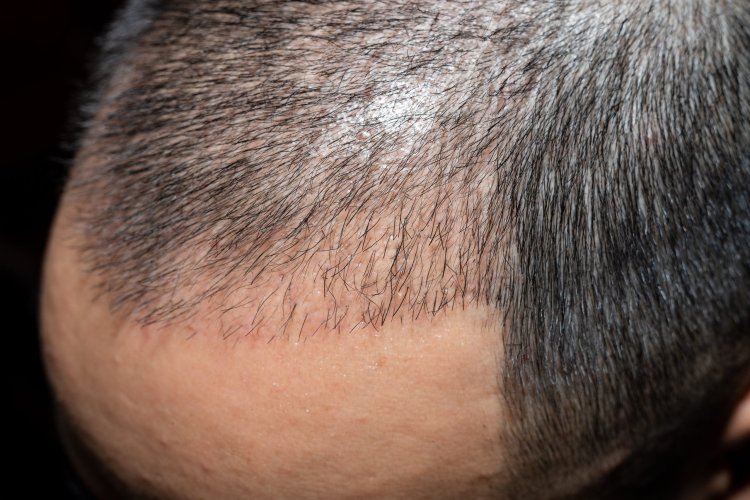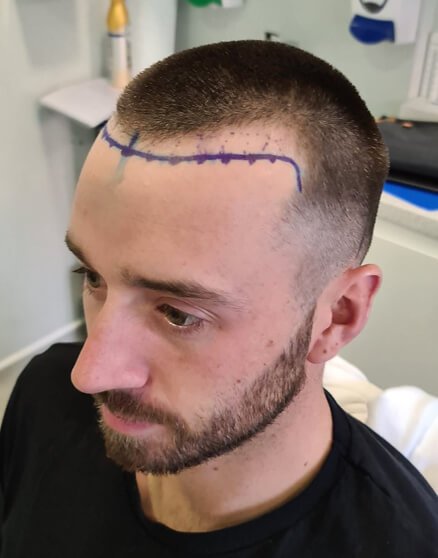What Are the Risks of Hair Dyeing on Hair Health?
Discover how hair dye affects hair health, potential risks, and ways to prevent breakage. Learn expert tips for maintaining strong, vibrant hair.

Hair dyeing has become integral to modern beauty routines, allowing individuals to express their style or cover greying strands. However, a persistent concern lingers does dying hair cause hair loss? Many fear that frequent colouring may lead to thinning hair or excessive shedding.
This blog explores the science behind hair growth, the effects of hair dye chemicals, potential risks, and preventive measures to maintain hair health. By understanding these factors, you can make informed decisions about dyeing your hair without compromising its strength or longevity.

Understanding Hair Structure and Growth Cycle
To determine whether dyeing contributes to hair loss, it is essential to understand how hair grows and regenerates. The hair growth cycle consists of three main phases:
-
Anagen (Growth Phase) – This active growth phase lasts between 2 to 7 years. The longer this phase lasts, the longer hair can grow.
-
Catagen (Transition Phase) – A short phase of about two weeks, where hair follicles shrink, and growth slows before entering the resting phase.
-
Telogen (Resting Phase) – Lasting approximately three months, this is when older hairs are shed, making way for new hair growth.
How Chemicals Affect Hair Follicles
Hair dye mainly affects the hair shaft rather than the hair follicle, meaning it does not directly halt new hair growth. However, repeated exposure to harsh chemicals can weaken hair strands, increase breakage, and, in some cases, lead to temporary shedding.
-
Targets the hair shaft – Dye changes the colour of the visible hair but does not reach the follicle.
-
Weakens hair strands – Harsh chemicals can strip moisture, making hair brittle.
-
Increases breakage – Frequent dyeing can weaken hair structure, causing breakage near the roots.
-
Causes scalp irritation – Some chemicals trigger allergic reactions or inflammation.
-
Leads to temporary shedding – Severe irritation may disrupt the hair growth cycle.

Chemical Composition of Hair Dyes
Most hair dyes contain a blend of chemicals to achieve long-lasting colour. Some of these ingredients can impact hair strength and scalp health.
|
Chemical |
Effect on Hair & Scalp |
Potential Risks |
|
Ammonia |
Opens the hair cuticle for colour absorption |
Weakens the hair shaft |
|
Hydrogen Peroxide |
Strips natural pigment from hair |
Causes dryness and brittleness |
|
Paraphenylenediamine (PPD) |
Enhances darker shades |
May trigger allergic reactions |
Ammonia and peroxide are particularly damaging because they alter the natural structure of hair. This can make hair more fragile and prone to snapping. The use of hair consultation services can provide insights into maintaining hair strength post-colouring while ensuring a healthy scalp.
Can Hair Dye Lead to Hair Loss?
Dyeing hair does not cause hair loss in the medical sense, but it can contribute to increased hair breakage and thinning. Unlike conditions that affect hair growth from the root, hair dye weakens the hair shaft, leading to snapping and shorter-looking hair. Understanding this process is essential, especially for individuals concerned about their hair transplant recovery timeline, as maintaining hair strength and scalp health can support overall hair restoration efforts.
Factors That Influence Hair Breakage:
-
Frequent Dyeing – Overexposure to chemicals leaves hair dry and brittle.
-
Hair Type & Condition – Naturally thin or already damaged hair is more vulnerable.
-
Scalp Sensitivity – Some individuals experience allergic reactions, leading to inflammation or temporary shedding.
-
Heat & Styling Products – Blow drying and straightening dyed hair further weaken its structure.
Preventative Measures to Reduce Hair Damage
To maintain strong and healthy dyed hair, consider these best practices:
|
Best Practice |
Benefit |
|
Use sulphate-free shampoo |
Retains moisture & prevents dryness |
|
Apply hair masks weekly |
Strengthens and hydrates hair |
|
Minimise heat styling |
Reduces breakage & split ends |
|
Opt for ammonia-free dyes |
Less damage to the hair cuticle |
Effective Treatments for Hair Loss Due to Hair Dye
Frequent hair dyeing can weaken hair follicles, leading to excessive shedding and thinning. To restore hair health and prevent further loss, consider the following treatments:
Scalp Nourishment – Use nourishing oils and scalp treatments to strengthen follicles and improve circulation. Regular scalp massages with essential oils like rosemary or castor oil can stimulate hair growth.
Protein and Deep Conditioning Treatments – Strengthen hair strands with protein-rich masks and deep conditioning treatments to repair damage caused by chemicals in hair dyes.
Low-Level Laser Therapy (LLLT) – Stimulates hair follicles using light energy, improving hair density and reducing shedding.
PRP Therapy – Platelet-rich plasma (PRP) injections can enhance hair regrowth by stimulating dormant follicles.
Hair Transplant – In severe cases, a hair transplant can restore lost hair permanently. Understanding the hair transplant recovery timeline is essential for achieving optimal results. Proper post-treatment care ensures healthy and natural-looking hair regrowth.

Alternatives to Permanent Hair Dye
If you want to change your hair colour without the long-term commitment or potential damage of permanent dyes, there are several gentler alternatives. These options provide vibrant colour while keeping your hair healthy.
-
Henna and Plant-Based Dyes – Made from natural ingredients, these dyes offer a safe way to colour hair without harsh chemicals.
-
Temporary Colour Sprays – A great choice for a one-time look, these sprays add instant colour without penetrating the hair shaft.
-
Hair Gloss Treatments – Designed to enhance shine and boost colour, gloss treatments provide a subtle tint without causing long-term damage.
These alternatives allow you to experiment with colour while maintaining the health and integrity of your hair.
When to Seek Professional Advice
If you are experiencing excessive hair shedding or noticing thinning patches, it is crucial to seek professional advice. Hair dyeing and other factors can weaken hair follicles, leading to long-term damage. Consulting a specialist for a hair transplant consultation can help assess the extent of hair loss and determine the most effective treatment options. Experts can recommend personalised solutions such as scalp nourishment, PRP therapy, or advanced restoration methods. If hair loss is significant, a hair transplant may be the best option to achieve lasting results. Taking proactive steps with professional guidance can help restore hair health and confidence.
Warning Signs to Seek Professional Advice:
-
Significant hair thinning after dyeing.
-
Persistent scalp irritation or allergic reactions.
-
Hair breakage near the roots.
If these issues persist, consulting specialists can help determine whether external treatments or long-term solutions are necessary.
Conclusion
Dyeing hair does not directly cause hair loss, but repeated exposure to harsh chemicals can lead to weakened strands, breakage, and temporary shedding. Understanding the impact of chemical ingredients, adopting preventative measures, and exploring gentler alternatives can help maintain healthy hair.
For those experiencing hair thinning or damage, seeking guidance from hair transplant recovery timeline specialists can ensure tailored solutions for scalp and hair health.At Zestige Private Healthcare, we prioritise comprehensive hair care and personalised consultations to help individuals achieve their desired hair goals without compromising long-term health. Whether you choose to dye your hair or explore other styling options, making informed decisions is key to maintaining strong and vibrant locks.
What's Your Reaction?

















